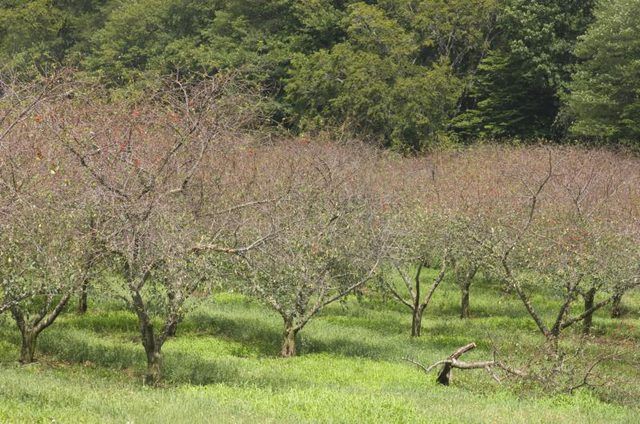Bulbs
Flower Basics
Flower Beds & Specialty Gardens
Flower Garden
Garden Furniture
Garden Gnomes
Garden Seeds
Garden Sheds
Garden Statues
Garden Tools & Supplies
Gardening Basics
Green & Organic
Groundcovers & Vines
Growing Annuals
Growing Basil
Growing Beans
Growing Berries
Growing Blueberries
Growing Cactus
Growing Corn
Growing Cotton
Growing Edibles
Growing Flowers
Growing Garlic
Growing Grapes
Growing Grass
Growing Herbs
Growing Jasmine
Growing Mint
Growing Mushrooms
Orchids
Growing Peanuts
Growing Perennials
Growing Plants
Growing Rosemary
Growing Roses
Growing Strawberries
Growing Sunflowers
Growing Thyme
Growing Tomatoes
Growing Tulips
Growing Vegetables
Herb Basics
Herb Garden
Indoor Growing
Landscaping Basics
Landscaping Patios
Landscaping Plants
Landscaping Shrubs
Landscaping Trees
Landscaping Walks & Pathways
Lawn Basics
Lawn Maintenance
Lawn Mowers
Lawn Ornaments
Lawn Planting
Lawn Tools
Outdoor Growing
Overall Landscape Planning
Pests, Weeds & Problems
Plant Basics
Rock Garden
Rose Garden
Shrubs
Soil
Specialty Gardens
Trees
Vegetable Garden
Yard Maintenance
Japanese Cherry Tree Facts
Japanese Cherry Tree Facts. Cultivars of Cheal’s weeping cherry, also called Japanese flower cherry (Prunus serrulata), and Yoshino cherry (Prunus x yedoensis) are the ornamental cherry trees that yield profuse flowers in the annual cherry blossom festival in Washington, D.C. The attractive Higan cherry (Prunus subhirtella) offers the...
Cultivars of Chealís weeping cherry, also called Japanese flower cherry (Prunus serrulata), and Yoshino cherry (Prunus x yedoensis) are the ornamental cherry trees that yield profuse flowers in the annual cherry blossom festival in Washington, D.C. The attractive Higan cherry (Prunus subhirtella) offers the advantage of living longer. You're most likely to find shorter cultivars at nurseries and garden centers.
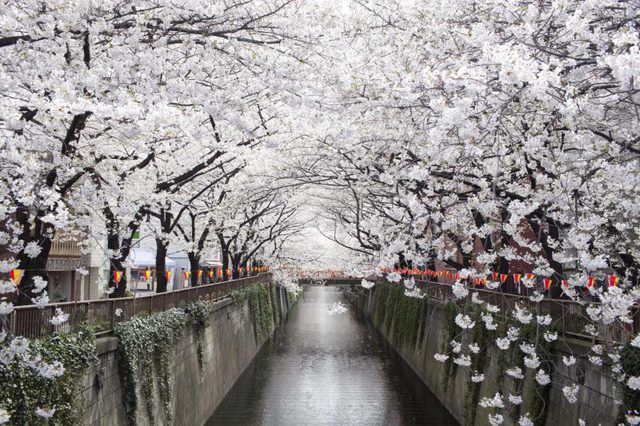
Chealís weeping cherry, grows 50 to 75 feet tall, producing profuse numbers of white to pink flowers in early spring and pea-sized black fruits in late summer. The grafted cultivars do not yield fruits. Chealís weeping cherry and its cultivars will all grow in U.S. Department of Agriculture plant hardiness zones 6a through 9b. The cultivar you're most likely to find, "Kwanzan" (Prunus serrulata "Kwanzan"), also listed as "Kanzan" (Prunus serrulata "Kanzan") grows 30 feet tall and 20 feet wide. The narrow, columnar "Amanogawa" (Prunus serrulata "Amanogawa"), also listed as "Erecta" (Prunus serrulata "Erecta") grows up to 20 feet tall, and produces light pink flowers. Wide-spreading "Shirofugen" (Prunus serrulata "Shirofugen") has unscented flowers white flowers with double rows of petals. Two cultivars are not good for coastal areas. They are "Shirotae" (Prunus serrulata "Shirotae") also listed as "Mt. Fuji" (Prunus serrulata "Mt. Fuji"), which grows up to 20 feet tall yielding fragrant, pink flowers and "Shogetsu" (Prunus serrulata "Shogetsu") also listed as "Shimidsu" (Prunus serrulata "Shimidsu") that grows 15 feet tall, showing pale pink flowers in late spring.
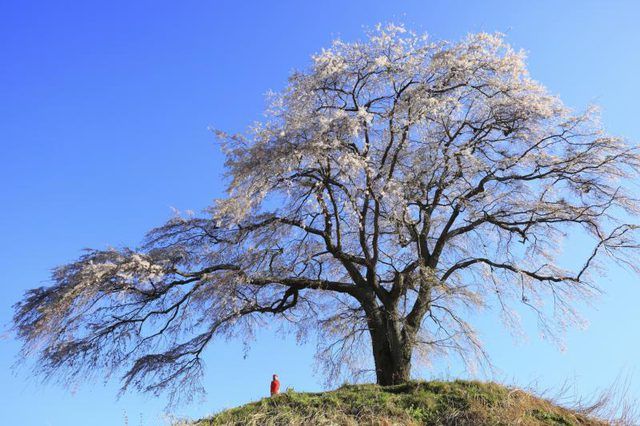
The rounded, spreading Yoshino cherry tree can grow 40 to 50 feet tall and just as wide. Its showy, slightly fragrant white to pink flowers appear in early spring before the tree leafs out. Yoshino cherry and its cultivars will grow in USDA zones 3a through 7b. Smaller cultivars include "Akebono" (Prunus x yedoensis "Akebono") also called "Daybreak" (Prunus x yedoensis "Daybreak") a rounded tree with pink flowers that blooms in early spring. This cultivar is not suited to coastal areas. "Shidare" (Prunus x yedoensis "Shidare") grows in a weeping form and has white flowers.
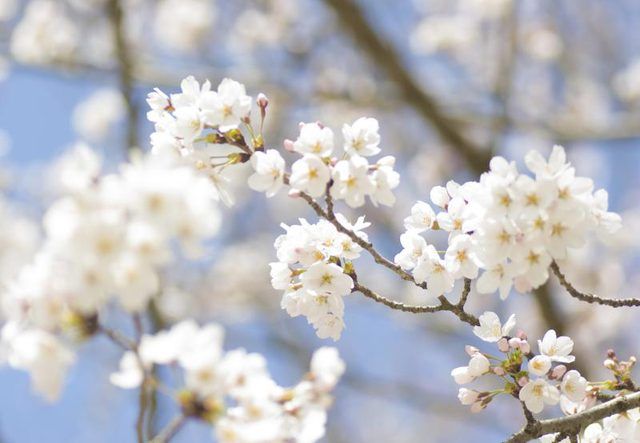
Higan cherry (Prunus subhirtella) grows 20 to 40 feet tall and 15 to 30 feet wide, living longer than Chealís weeping cherry or Yoshino cherry. As with the other Japanese cherry trees, it produces white to pink flowers with single or double rows of petals before it grows leaves. The cultivars you're likely to find at nurseries are not suited to coastal areas. "Autumnalis" (Prunus subhirtella "Autumnalis") features multiple trunks with upright branches that form a rounded canopy. "Autumnalis" produces white to pinkish flowers with double rows of petals in early spring and sometimes again in warm fall weather. Youíll need a lot of room for the graceful, weeping "Pendula" (Prunus subhirtella "Pendula"), with its white or pink flowers with a single row of petals. Higan cherry and its cultivars will grow in USDA zones 5a through 9b.
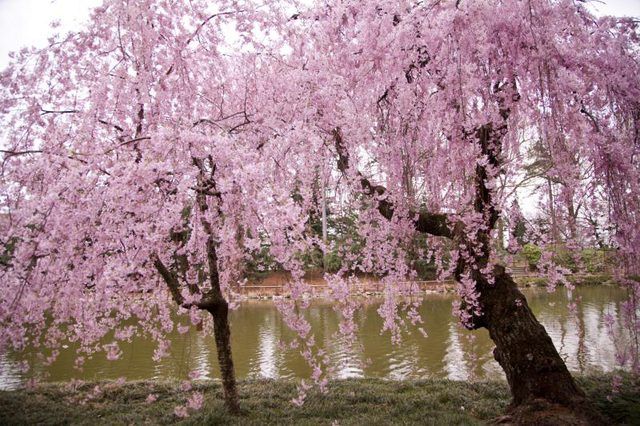
Japanese cherry trees grow rapidly, up to 25 inches a year in some cases, but are short lived. Yoshino cherry may only live 15 to 20 years. These trees are susceptible to numerous problems with insects and diseases, which generally contribute to their early decline.
